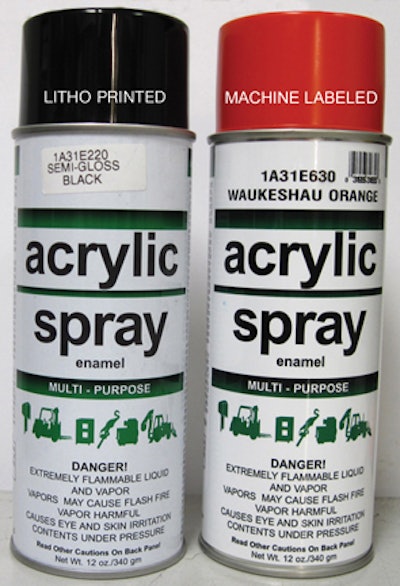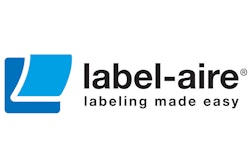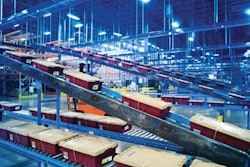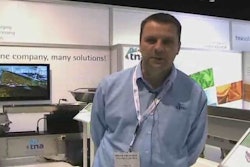Forrest Paint CoForrest Paint had been ordering inventories of pre-lithograph-printed steel cans and also had been hand-gluing ID code stickers to many of these cans. For custom orders, the company also was hand-gluing preprinted paper labels to the cans. This whole system required keeping large label inventories and involved significant amounts of labor and time for glue labeler maintenance and cleaning operations.
Heath A. Banry, director of marketing/consumer products for Forrest Paint Co., notes, “When evaluating new labeling options, we were focused on two potential benefits: cost savings and label printing flexibility.
“In early July 2010, we installed a 5100 series in-line wrap labeler from Label-Aire with print-on-demand (POD) capabilities from Zebra Technologies. We selected this system because of the price, the in-line printing flexibility, and also because Label-Aire is known in the industry for product quality and reliable service.”
Designed for reliable full and partial wrap labeling at medium to high speeds, the system features rugged stainless-steel construction and a variable frequency drive conveyor which enhances label placement accuracy.
Banry notes, “We installed a Label-Aire unit distributed by Taylor Made Labels. Taylor Made has certified technicians who performed the set-up and trained our staff for two days. After working so closely with us, Taylor Made now has an intimate knowledge of our operations. And their ability to provide labeling equipment consultation as well as supply the wraparound pressure-sensitive labels has been beneficial. It’s a ‘one-stop-shop’ with a company that understands our operational needs.”
Taylor Made consulted closely with Forrest Paint on the type of machine that would be best suited to the operation and helped identify the optimum system for future expansion. Banry points out, “Taylor Made recognized that the Label-Aire 5100 would allow us to grow our production by 50 percent to 60 percent without major investments or upgrades in the labeling equipment. And, as a label manufacturer, they helped us identify the highest-quality look for the marketplace and the highest-quality performance on the label application machinery.”
Print info flexibility
Under the previous can-printing system, Banry says, “The majority of our cans were lithographed, which requires large minimum orders from the manufacturer. Most aerosol can manufacturers require 50,000 cans per litho run,” he explains.
“We also hand-labeled approximately 20 percent of our production for customers requiring custom labels. And we also manually applied ID code stickers to another 70 percent of the cans. So we were very labor-intensive. With the Label-Aire system, we do all this label application work by machine. Our current labeling speeds are about 40 to 45 cans per minute. But with some adjustments, we’re confident that we can get up to 65 cans per minute with the Label-Aire system. The system incorporates a Zebra Technologies thermal-transfer printer that prints bar codes, date codes, and other variable data in-line on the pressure-sensitive labels.
“We estimate that we’ve saved about 25 percent on total can and label costs right off the top, and our label printing is much more flexible. So we don’t have to order so many pre-printed cans. We can change print jobs for different products quickly and easily.”
Labor costs expended for manual label application have been cut by about 25 percent. And packaging (can and label) inventory projections and controls have been simplified significantly, while reducing inventory space requirements by about 40 percent. A supply of 50,000 labels takes up a lot less space than 50,000 preprinted cans.
Summing up the advantages of Forrest Paint’s new labeling operation, Banry says, “More than anything is the flexibility this system offers us. We can better serve our customers, while making the process much more manageable in-house. The flexibility and ease of use are what we notice every day in our production and packaging facility.”


























